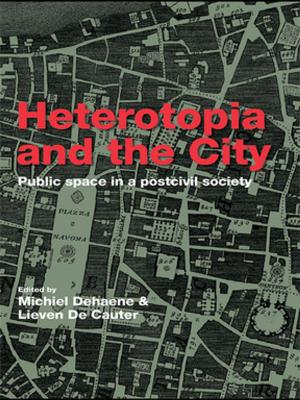NATØ: Narrative Architecture in Postmodern London
Nonfiction, Art & Architecture, Architecture, Individual Architect, History| Author: | Claire Jamieson | ISBN: | 9781317200048 |
| Publisher: | Taylor and Francis | Publication: | January 20, 2017 |
| Imprint: | Routledge | Language: | English |
| Author: | Claire Jamieson |
| ISBN: | 9781317200048 |
| Publisher: | Taylor and Francis |
| Publication: | January 20, 2017 |
| Imprint: | Routledge |
| Language: | English |
Chronicling the last radical architectural group of the twentieth century – NATØ (Narrative Architecture Today) – who emerged from the Architectural Association at the start of the 1980s, this book explores the group’s work which echoed a wider artistic and literary culture that drew on the specific political, social and physical condition of 1980s London. It traces NATØ’s identification with a particular stream of post-punk, postmodern expression: a celebration of the abject, an aesthetic of entropy, and a do-it-yourself provisionality. NATØ has most often been documented in reference to Nigel Coates (the instigator of NATØ), which has led to a one-sided, one-dimensional record of NATØ’s place in architectural history. This book sets out a more detailed, contextual history of NATØ, told through photographs, drawings, and ephemera, restoring a truer polyvocal narrative of the group’s ethos and development.
Chronicling the last radical architectural group of the twentieth century – NATØ (Narrative Architecture Today) – who emerged from the Architectural Association at the start of the 1980s, this book explores the group’s work which echoed a wider artistic and literary culture that drew on the specific political, social and physical condition of 1980s London. It traces NATØ’s identification with a particular stream of post-punk, postmodern expression: a celebration of the abject, an aesthetic of entropy, and a do-it-yourself provisionality. NATØ has most often been documented in reference to Nigel Coates (the instigator of NATØ), which has led to a one-sided, one-dimensional record of NATØ’s place in architectural history. This book sets out a more detailed, contextual history of NATØ, told through photographs, drawings, and ephemera, restoring a truer polyvocal narrative of the group’s ethos and development.















